In June 2018, for the first time ever, a North Korean leader met with a sitting U.S. President. Since the Singapore Summit, Kim Jong Un has made good on pausing nuclear and long-range missile tests. President Trump’s unconventional “top down” approach may have succeeded at de-escalating tensions and creating breathing space for nuclear negotiations, but the issue of North Korean denuclearization remains on the table in an all too familiar state. As with previous agreements, North Korea’s 2018 commitment only applied to pausing a portion of its overall proliferation program; while in reality, it has continued its efforts in earnest to improve and expand its nuclear weapons portfolio.
The U.S. positional negotiating strategy requiring complete, verifiable, irreversible dismantlement (CVID) up front in exchange for sanctions relief—defensible considering the U.S. policy on nonproliferation—has nonetheless failed to achieve an efficient rollback of Pyongyang’s nuclear program and current U.S.-North Korea negotiations remain stalled. Based on past actions of the Kim regime and the new ICBMs recently revealed at a military parade, an incoming Biden administration should expect an immediate and direct challenge from North Korea meant to get the U.S. back to the negotiating table. In order to deal more effectively with North Korea, the new administration must develop an approach along four strategic lines.
First, prior to jumping into talks, fully comprehend North Korea’s true negotiating objectives. “Denuclearization” is not a priority objective for North Korea. Prior to entering any new negotiations, the next administration should grasp the material and nonmaterial value that North Korea’s nuclear program represents for the Kim regime. Kim Jong Un’s nuclear weapons deterrent is the culmination of a 60-plus year science and technology grand legacy started by his grandfather, accelerated by his father, and then “perfected” by him. From this standpoint, it is vital the next administration understand that North Korea would never willingly relinquish all of its nuclear weapons—important to note prior to heading into negotiations.
Second, thoroughly grasp North Korea’s motives and interests. The next administration will need to ensure it understands the full range of purpose that North Korea’s nuclear program provides. Much of the literature on North Korea’s nuclear motives focuses on regime survival. The weakness with over-reliance on this line of reasoning is that it fails to capture the full range of utility for North Korea’s nuclear weapons. “Survival” only represents those needs at the very bottom of the utility range, when in fact, nuclear weapons provide much greater utility for North Korea. Nuclear weapons give the country de facto “nuclear state” status, exaggerate its regional power and influence, and arm it with the potential to someday compel South Korea and radically alter the security balance in Northeast Asia. Even in a highly unlikely future scenario where the U.S. withdraws its forces from South Korea and is no longer present in the region, North Korea’s nuclear weapons would still hold regional deterrence value against perceived threats from Japan, China and Russia.
Third, should the new administration choose to negotiate, it must “flip the script” and avoid the “uninformed buyer” role, where North Korea, as the seller, is put in the position of examining U.S. buyer proposals, only to ultimately conclude that the price (which always hinges on verification) the U.S. offers fails to meet the North Korean cost for denuclearization. U.S. and North Korean goals don’t align on common interests, so making denuclearization the primary focus puts the U.S., which is blind as to the true extent of what it is attempting to buy, at a positional disadvantage. Moving forward, it will be necessary to flip the negotiating framework and put North Korea in the “buyer” role, where North Korea’s goals and proposals must meet a cost for success that hinges on the progress it makes toward denuclearization. By doing this, it will be possible for some common interests, as implausible as that may seem, to emerge.
Lastly, the next administration should bolster its negotiating position by re-strengthening the U.S.-ROK alliance. The deadlocked U.S.-ROK defense cost-sharing talks (Special Measures Agreement), which triggered furloughs of South Korean employees assigned to U.S. Forces Korea, was altered in 2018 to require annual negotiations (versus every five years). This annual requirement should be abrogated and the process should be re-stabilized at longer intervals between negotiations. Moving forward, care should be taken to make cost-sharing negotiations less about transactional “wins” and more about reinstating a highly effective military alliance. Additionally, combined exercises, previously labeled “expensive” by the outgoing President Trump, should be fully re-instated to ensure the military readiness of the alliance.
By understanding the true objectives, motives and interests of North Korea’s nuclear program and putting “buyer” onus on North Korea while re-strengthening the U.S.-ROK alliance, the new administration can expect more efficient outcomes when confronting North Korea over denuclearization.
George Hutchinson is a PhD student in Public Policy at the Schar School of Policy and Government and a Senior Regional Planner with SecuriFense, Inc. He has a bachelor’s degree in Asian Studies from the University of Maryland and a master’s degree in Logistics Management from the Air Force Institute of Technology. He previously served as an officer in the U.S. Air Force, specializing as a Northeast Asia Foreign Area Officer, Logistics Readiness Officer, and Korean linguist. He has published articles in the International Journal of Korean Studies, U.S. Naval Institute Proceedings, and the Air Force Journal of Logistics, as well as reports by the Korea Economic Institute of America and Marine Corps University Press. George’s research interests include U.S. defense and foreign policy as they relate to Northeast Asian and the Korean Peninsula.
Photo can be found here.




